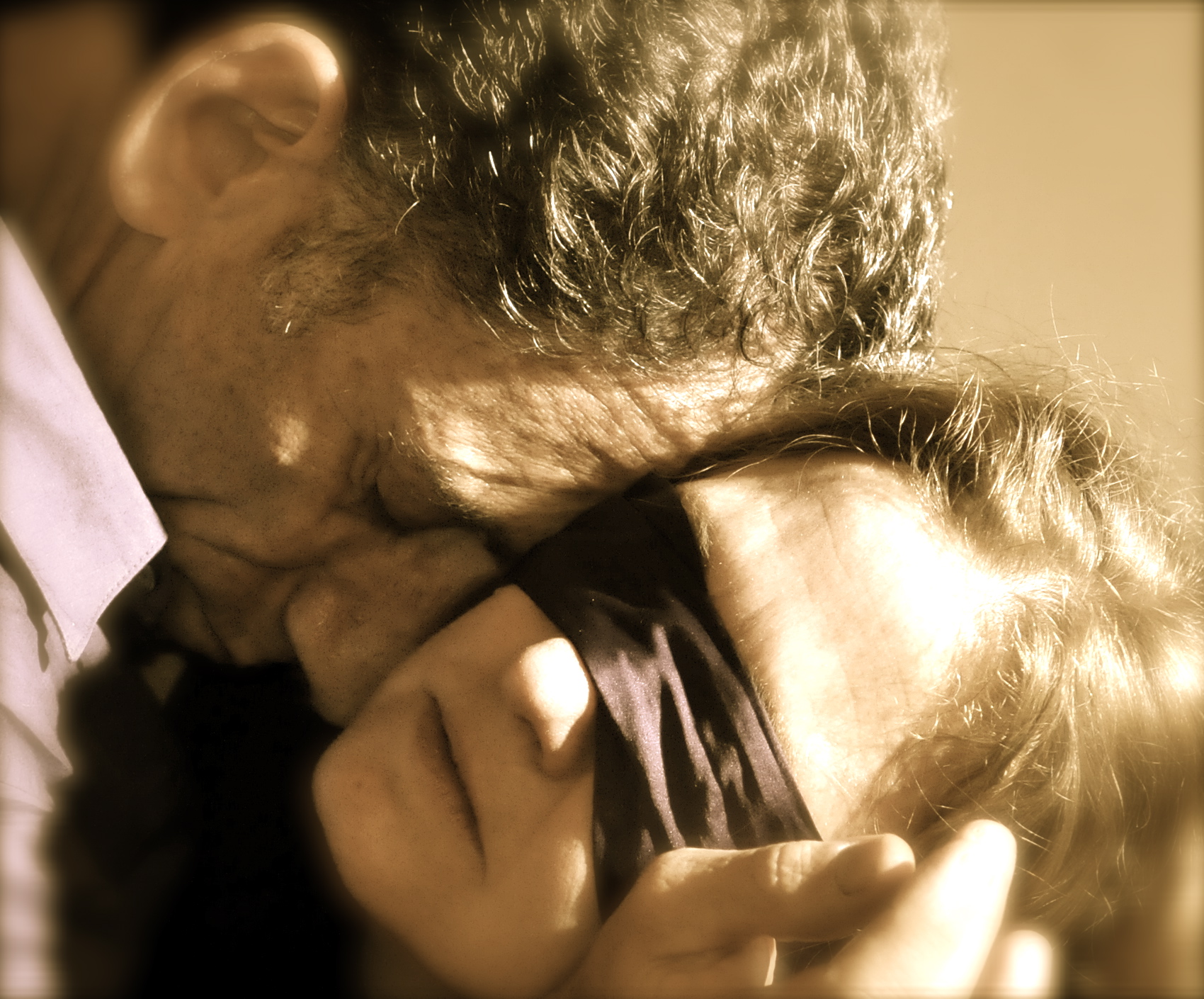What the Heart Wants
Lightsey Darst gives a glimpse into the underpinnings of Stuart Pimsler Dance & Theater's new production, "Tales from the Book of Longing," which investigates the adult complexities of want, desire, and yearning.


TO BE ADULT IS TO KNOW BETTER. You are not going to get everything you want; you are not going to get an answer. You are special to someone, but not exactly in the way you wanted to be. You cannot go back, you cannot skip ahead. You will not be completely understood. There is no such thing as a perfect understanding — there is not even any constant quantity to understand.
And yet — to be adult is to want these things more deeply than when one really believed in them. To be adult is to have perfected the power of wanting, to long with a whole body and its nuances, with a history and its revelations and lies, to throw — to not be able to help throwing — that entire strange paradox called the self into one’s wish.
Stuart Pimsler has ideas about wanting. His 2007 piece, The Ends of Love, mused on desire; now, with Tales from the Book of Longing, the new Stuart Pimsler Dance & Theater show (which opens at the Guthrie Oct 8 and runs through Oct 18), he’s turned to longing. What’s the difference? Ask him, and he unrolls a little taxonomy. “Longing has a history, where desire is in the moment,” he says. Desire is “a more general human condition,” while longing is specific, individual, focused on a remembered experience or place or person or, even, taste — Pimsler cites the famous madeleine passage from Proust’s Swann’s Way as inspiration. But do we long for the actual substance of the past? Or do we, in memory, change what we long for, embroider it, glorify it? If we had what we long for, would it satisfy us?
Pimsler doesn’t pursue this through a single narrative or a unified symbol system, but as the title suggests, through a series of “tales,” vignettes unified by the theme of longing.
Off balance, the dancers swirl. They pursue each other around a space divided by thin folding partitions, almost like the scattered pages of a book, each covered in scrawl. I can’t make out the writing — well, almost that line — but is it trivial or heartfelt? That one stroke makes the difference, but it’s all blurred, like a letter left out in the rain. Or is that a drawing — of a tree — a house –?
The pages move, pushed from behind, closing in on a dancer or falling lightly on top of another. At times, the pages stand between two dancers. They can’t see each other, but I can see both, their hands caressing the surface between, like Pyramus and Thisbe.
One dancer runs behind a page, and another I didn’t know was there runs out. My eye wants the first one back, but I can’t help following the new one. They all look so young, in constant motion, clutching and flinging and abandoning each other, headlong. It’s hard to keep track of them, but even in their whirl, I sense that one remains hidden, constant.
ENCOUNTER PIMSLER AT DIFFERENT STAGES in a project and he’ll talk about different elements. Early on, he talked about the poetry of Leonard Cohen (from which Pimsler drew his title), then it was the music of Antony & the Johnsons (that high wailing trembling voice). Then these two influences (both so right in their experienced longing) were absorbed, and Pimsler was fascinated with Joe Stanley’s set design — those large, lightweight “pages” that conceal or close in on dancers, cutting up space and sightlines to leave the viewer wondering and wanting. A few weeks before the show, Pimsler has digested it all and is at the core of the work, at the center of the question. Tales from the Book of Longing is an experience for the viewer, but it is also, for Pimsler, a way of investigating.
And Pimsler doesn’t erase one investigation for the next; he builds, so that each new show also contains a record of the past enthusiasms of his curious mind. A line, a move opens a little window into some deep encounter that Pimsler just touches on now. (He has nearly thirty years’ worth of SPDT’s past to touch on.) “I enjoyed not knowing about the feelings of A, B, C, or D,” he says in a voiceover, referencing for a second the French nouveau roman. Or, he’ll pick up a past work of his own in a single note. These references, even if you don’t catch all of them, feel like rhymes — slant-rhymes, though, that never close the meaning down, but keep opening it out.
______________________________________________________
Emotional movement, with its object removed, is the core of the dance. Gestures of reaching, sweeping away, clinging, suffering, or enjoying unfurl, free of purpose but richly resonant.
______________________________________________________
A scrim of people stand between two dancers — accidental, mindless, like strangers waiting for a bus. Their faces register nothing. The two dancers move around the others, not quite aware of each other, uncertain of their own purpose. The woman bends into a stately grande plie, then relaxes into a slouch of waiting. But as they cross through the line of strangers, the man sees the woman. As the dance ends, he crosses through to her, as if about to speak.
I wince when dancers speak. It’s not only that words cut into the otherworldliness of dance, destroying the fantasy of identification and bringing us back to ourselves; it’s also that dance-makers and dancers tend not to be very good at writing and delivering text. It’s not their training.
But SPDT is different. I hardly ever feel that they are “dacting” (a friend’s pejorative term for dance-acting) — partly because the performers are so practiced in text and theater that they can speak or even sing convincingly, and partly because Pimsler’s texts are art, too. Emotional movement, with its object removed, is the core of the dance; gestures of reaching, sweeping away, clinging, suffering, or enjoying unfurl, free of purpose but richly resonant. Just so, Pimsler strips a text to its desires, so that what’s left doesn’t narrow down to a single meaning, but opens out with the elliptical resonance of poetry.
“So you are there and I am here — waiting, still, but moving.” Who couldn’t have said this at some point, in one of a hundred situations, all of which spring open with the voiceover?
Words are important not only to the company’s performance, but to their process. During rehearsal, Pimsler coaches Roxane Wallace through an impulsive dance in the shrinking space of a closing flat. First, he’s just adding a word or an idea here or there — “More with your upper body.” But then, as she starts to get it, he talks constantly, turning his directions into a song that accompanies her dance: “You’re doing the same thing — don’t even look at it — now get smaller and smaller…” The words move the dance forward; it’s as if he’s telling her the thought she wants to create for the viewer.
Pimsler stages that very process in a short, strange tale. He walks across stage, speaking to himself in a non-language, sometimes whispering, sometimes singing, while a voice from offstage coaches him. Enjoy yourself, she tells him, make it funny, and he laughs. “But then it’s not so funny — maybe it’s a little sad,” she says, and he weeps. “Say it closer to us,” she commands, and he bends towards us, intimately. “And now tell us the end of the tale,” she says. “That’s good. Keep talking” — and she leaves him, still talking in his own language.
What can you make of this? I’m not sure which is stronger: the fantasy of being understood (even in a private language), or the fear of being misunderstood. Pimsler’s work is like this — multiform meanings, specificity and ambiguity, all in a dreamlike mix — except that it’s not so much dreamlike as it is realistic. Think of a past moment, a past love: does the memory have a meaning? Or is it more like this “tale,” pulling in two directions at once?
When we say a work is “adult,” we usually mean it contains nudity, or that it’s depressing. But Pimsler’s work is adult in another sense: full of the vivid and complex emotion of adult life.
In voiceover, a speaker promises himself, “And if I can translate what I know about you, you will be revealed, at last.” We know it’s a dream, this idea of total revelation, of complete seeing. But it’s no less compelling for that.
______________________________________________________
Related performance details:
The world premiere of Stuart Pimsler Dance & Theater’s Tales from the Book of Longing, conceived and directed by Stuart Pimsler with Suzanne Costello will be on stage in the Guthrie’s Dowling Studio from October 8-18. Visit the Guthrie website for ticket information and specific performance times.
______________________________________________________
About the writer: Lightsey Darst writes on dance for Mpls/St Paul magazine. She is also a poet who served as the founding coordinator of mnartists.org’s What Light: This Week’s Poem publication project, and the founder and host of a monthly writers’ salon, The Works, at the Bryant Lake Bowl.